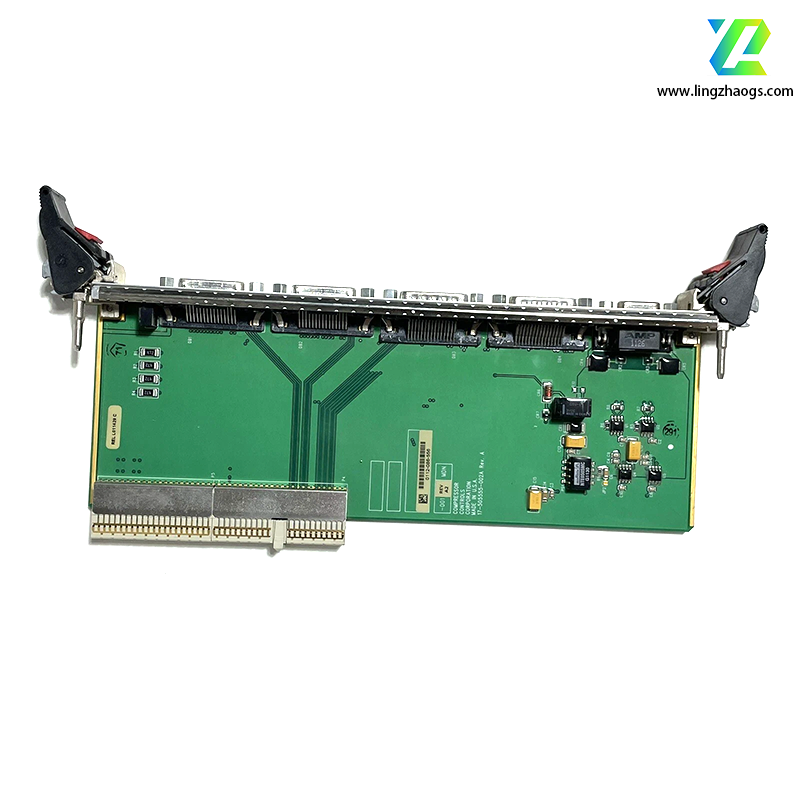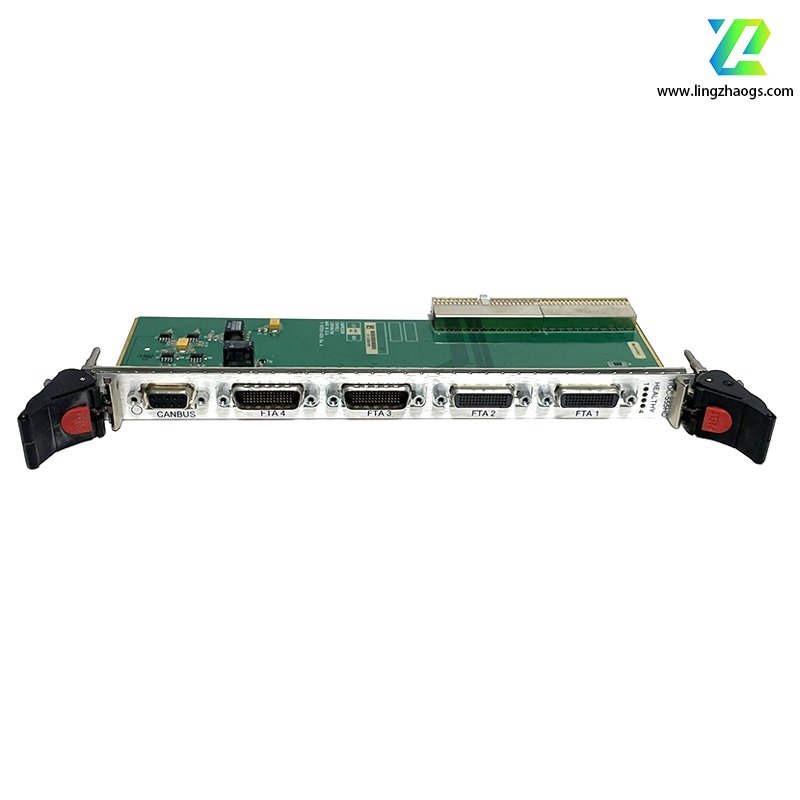CCC Compressor Controls Corp
- Product Name: CCC TIOC-555HD High-Density Turbine I/O Controller (TIOC) Module
- Product Categories: CCC Compressor Controls Corp
- Contact: 13394046250
- Company Name: Xiamen Lingzhao
- Company Address: Phase III of Software Park, Jimei District, Xiamen City, Fujian Province
- Add Time: 2025-10-22
Details
Here’s a detailed overview of CCC TIOC-555HD (Compressor Controls Corporation part number) based on industrial control system references, third-party distributor data, and CCC’s product focus on high-density I/O solutions for turbomachinery control. As a specialized I/O module, this part aligns with CCC’s emphasis on integrating field devices with core control systems in oil & gas, petrochemical, and power generation sectors. For official specifications, consult Compressor Controls Corporation (CCC) directly.
- Brand: CCC (Compressor Controls Corporation)
- Model: TIOC-555HD
- Type: High-Density Turbine I/O Controller (TIOC) Module
- Industry: Oil & gas, petrochemicals, power generation, and industrial manufacturing.
- Function: Acts as a high-density interface between CCC’s main control systems (e.g., Omnex T6000/T7000) and field devices in turbine/compressor applications. It consolidates analog/digital signals from sensors (e.g., temperature, pressure, vibration) and sends control commands to actuators (e.g., valves, fuel injectors). The “HD” designation highlights its high channel density, enabling compact integration of multiple signals in space-constrained control cabinets.
High-Density Signal Integration
- Supports a large number of analog/digital channels in a single module (e.g., 32 analog inputs + 16 digital inputs + 16 digital outputs—estimated based on “HD” nomenclature), reducing the need for multiple I/O modules and saving cabinet space.
- Combines turbine-specific signal types (e.g., vibration, speed, shaft position) with standard process signals (4-20 mA, 0-10V), eliminating the need for dedicated specialty modules.
Dual Signal Isolation & Noise Immunity
- Provides channel-to-channel galvanic isolation (typically 500V AC) and isolation from the module’s power supply, preventing ground loops and electromagnetic interference (EMI/RFI) common in industrial environments.
- Filters for high-frequency noise (e.g., from motor drives) ensure signal integrity for sensitive measurements like turbine vibration or bearing temperature.
Turbine-Specific Functionality
- Preconfigured to handle turbine-critical signals:
- Speed sensing: Interfaces with magnetic pickup (MPU) sensors to monitor turbine shaft speed (supports 0-10 kHz frequency inputs).
- Vibration monitoring: Compatible with proximity probes (e.g., Bently Nevada 3300 Series) for radial/axial vibration measurements.
- Safety interlocks: Dedicated high-speed digital inputs (response time <1ms) for emergency shutdown triggers (e.g., overspeed, high temperature).
Modular & Redundant Design
- Integrates seamlessly with CCC’s modular control systems; multiple TIOC-555HD modules can be daisy-chained via CCC’s proprietary backplane bus for system expansion.
- Optional redundancy (hot-swappable capability) allows module replacement without shutting down the control system, minimizing downtime for mission-critical turbines.
Electrical Parameters
- Power Supply: 24V DC (standard for CCC control modules), with a tolerance range of 18-32V DC.
- Power Consumption: ≤25W under full load (varies with active channel count).
- Analog Inputs (AI):
- Type: 4-20 mA (current), 0-10V (voltage); differential/single-ended.
- Channel Count: Estimated 16-32 channels (high density).
- Accuracy: ±0.1% of full scale (for precise process/turbine parameter measurement).
- Sample Rate: 100 Hz per channel (supports real-time vibration/speed monitoring).
- Analog Outputs (AO):
- Type: 4-20 mA (current), sinking/sourcing.
- Channel Count: Estimated 8-16 channels (for actuator control).
- Resolution: 16-bit (smooth control of valves/fuel injectors).
- Digital Inputs (DI):
- Type: Dry contact (NO/NC), 24V DC logic; high-speed inputs for speed/vibration.
- Channel Count: Estimated 16-32 channels (for status signals, interlocks).
- Response Time: <1ms (critical for safety interlocks).
- Digital Outputs (DO):
- Type: Relay contacts (2A @ 250V AC) or 24V DC open-collector.
- Channel Count: Estimated 8-16 channels (for alarms, relay triggering).
Physical & Environmental Attributes
- Form Factor: Rack-mount design (19-inch CCC standard), 2 rack units (U) high (accommodates high-density components).
- Dimensions: Approximately 483 mm (width) × 88 mm (height) × 220 mm (depth) (estimated).
- Environmental Ratings:
- Operating Temperature: -20°C to +60°C (suits indoor control rooms and outdoor turbine enclosures).
- Humidity: 5-95% (non-condensing), resistant to moisture in industrial settings.
- Vibration/Shock: Compliant with IEC 60068-2-6 (vibration, 5-500 Hz) and IEC 60068-2-27 (shock, 50g peak acceleration)—durable for turbine-mounted cabinets.
Communication Interfaces
- Proprietary Backplane Bus: 1 x CCC-specific bus for high-speed communication with main controllers (e.g., MCP-1004) at up to 1 Mbps.
- Ethernet Port: 1 x 10/100 Mbps port (Modbus TCP/IP) for configuration and diagnostics via CCC software.
- Serial Port: 1 x RS-485 port (Modbus RTU) for legacy device integration.
- Turbine Control Systems:
- Interfaces with gas/steam turbines driving compressors or generators, handling signals like shaft speed, bearing temperature, exhaust gas temperature (EGT), and fuel flow.
- Enables closed-loop control of turbine speed, load, and fuel injection via high-precision analog outputs.
- Compressor Auxiliary Control:
- Manages auxiliary systems for compressors (e.g., lube oil pressure, seal gas flow) by integrating sensors and controlling pumps/valves.
- Safety & Monitoring:
- Monitors critical safety interlocks (e.g., turbine overspeed, high vibration) and triggers emergency shutdowns via high-speed digital outputs, complying with industrial safety standards (e.g., SIL 2).
- Condition: Available as new OEM (through CCC directly) or genuine refurbished (via authorized distributors, e.g., EquipNet, Industrial Control Service).
- Warranty: 12-month warranty for new units (covers defects in materials/workmanship); refurbished units typically include a 6-month warranty.
- Documentation:
- Technical datasheets, wiring diagrams, and configuration guides are restricted to CCC’s authorized customers. Request official materials via CCC’s customer portal.
- Third-party distributors may provide basic compatibility notes for integration with CCC Omnex/T6000 systems.
- Compatible Systems:
- CCC Omnex T6000/T7000 Compressor/Turbine Control Systems.
- CCC Main Controllers (e.g., MCP-1004) and Power Supplies (e.g., PSMU-350-3).
- Turbine sensors (MPUs, proximity probes) and actuators (fuel valves, IGVs).
- Similar CCC Models:
- CCC TIOC-555: Standard-density version of the TIOC series (fewer channels, 1U form factor).
- CCC IOM I5-1: General-purpose I/O module (not turbine-specialized, lower density).
- Setup Requirements:
- Mount in a CCC-compatible 19-inch rack with 2U clearance; ensure minimum 50 mm ventilation space above/below to prevent overheating.
- Configure via CCC’s proprietary software (e.g., CCC Control Studio) to map channels to sensors/actuators, set signal ranges, and enable safety interlocks.
- Wiring Guidelines:
- Use shielded cables for analog/vibration signals to minimize noise; ground shields at the module end only.
- For high-speed digital inputs (e.g., speed sensors), use twisted-pair cables and keep wiring lengths <10 meters to avoid signal degradation.
- Safety & Troubleshooting:
- Follow lockout-tagout (LOTO) procedures when wiring or servicing to prevent electrical shock or unintended turbine actuation.
- Use front-panel LED indicators to diagnose issues (e.g., green = normal, red = channel fault, amber = power warning). For detailed diagnostics, use CCC software to access real-time channel data and fault logs.
- Model Specificity: The “HD” (High-Density) and “TIOC” (Turbine I/O Controller) designations mean this module is optimized for turbine applications. Do not use it as a general-purpose I/O module, as it lacks compatibility with non-turbine signal types (e.g., high-voltage digital signals).
- Calibration: Analog channels require periodic calibration (annually, per CCC recommendations) to maintain ±0.1% accuracy—use CCC’s calibration tools to avoid drift in critical measurements like EGT or vibration.
- Genuine Parts Only: For turbine safety and control reliability, use genuine CCC TIOC-555HD modules. Aftermarket alternatives may not meet CCC’s signal isolation or response time standards, risking incorrect turbine operation or safety hazards.
For further technical assistance, contact Compressor Controls Corporation’s global support team or your local authorized service provider. Always validate specifications against your turbine’s signal requirements and control system compatibility before installation.



